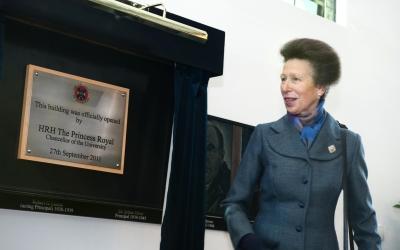New Veterinary Teaching Building in a class of its own
Future vets will benefit from a £42 million teaching facility that forms one of the world’s largest vet school campuses.

Our new veterinary teaching building was officially opened on 27th September 2011 by The Princess Royal, who is the University’s Chancellor and Patron of the Royal (Dick) School of Veterinary Studies.
Facilities
More than 1,000 staff and students can be accommodated in the new building, which is based next to the school’s hospitals for small and large animals, enabling students to gain a range of practical experience.
It includes lecture theatres, fitted with multi-media technology, a library, seminar rooms, teaching laboratories and a restaurant.
Students will also be able to practise on interactive man-made models at a clinical skills facility.
They will have access to interactive learning to check on the health of farm animals through web cams.
A Second Life teaching initiative enables students to visit a virtual equine treatment centre to discuss care for horses.
Changes in Veterinary Medicine
The new facilities will provide students with a range of expertise for a profession that has changed dramatically in the past 20 years.
Veterinary care for large animals is now more focused on the overall health of herds rather than individual treatments for single animals.
There is also greater provision of in-depth treatments for pets.
Global concerns, such as the spread of disease across borders, have also encouraged a more international approach to veterinary education.
The educational needs of the 21st Century vet are very different from the needs of veterinary students in the past. Vets need to be trained for an international market-place. They might find themselves helping improve the livelihoods of a billion poor livestock farmers in developing countries, thus working towards securing food production for a growing global population.
Animal Welfare
The new facilities will provide students with a range of expertise for a profession that has changed dramatically in the past 20 years.
Veterinary care for large animals is now more focused on the overall health of herds rather than individual treatments for single animals.
There is also greater provision of in-depth treatments for pets.
Global concerns, such as the spread of disease across borders, have also encouraged a more international approach to veterinary education.
Past and present
A statue of William Dick, who founded the school as Scotland’s first veterinary college in 1823, has been moved to the new building.
A number of stained glass windows were also moved from the school’s former home at Summerhall on Edinburgh’s south side.
Vets working in biomedical research will be able to look for cures for life-threatening diseases affecting both animals and humans while vets could even work on the front line of defence against agricultural bioterrorism, such as the use of anthrax.


